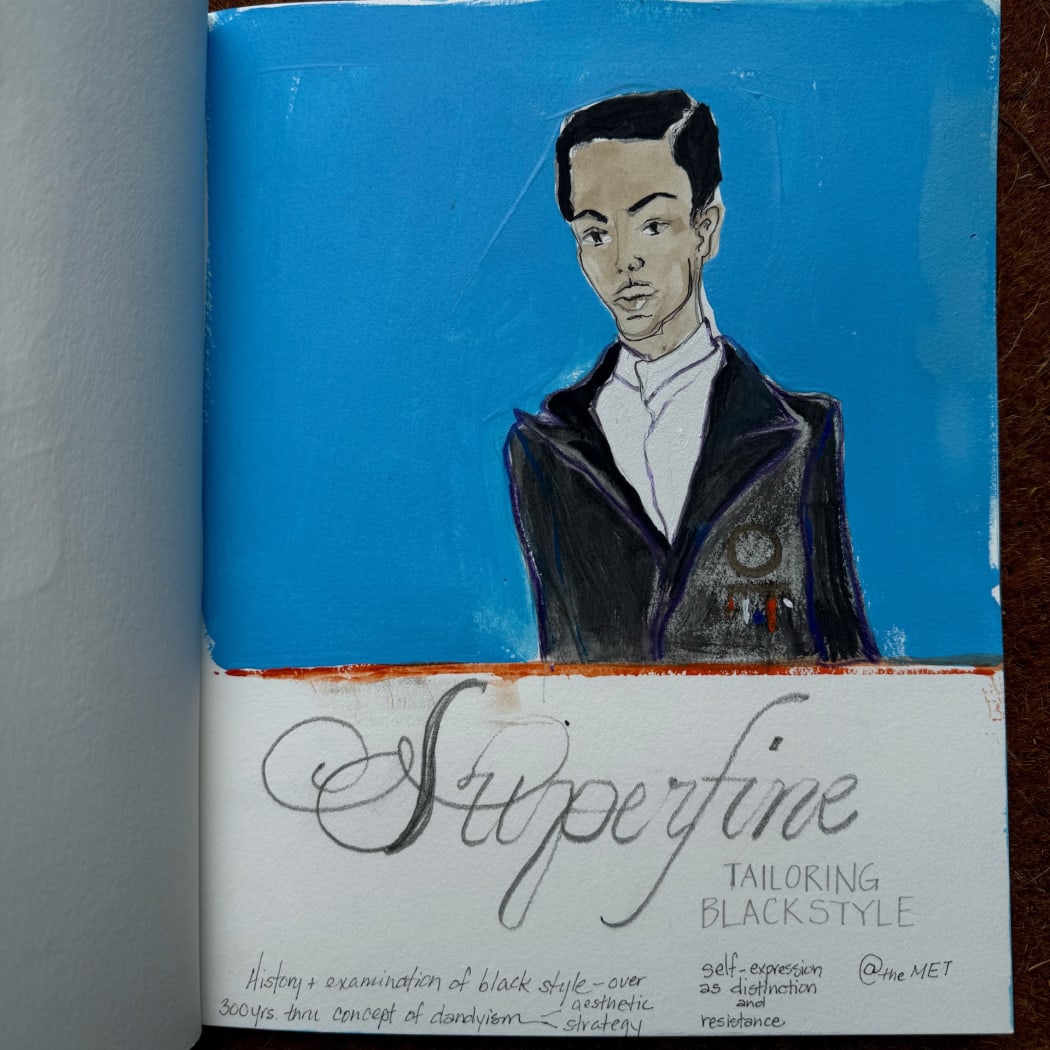
Tuesday evening, I taught the first class in a two part series on keeping a sketchbook you love. It was a total blast, and as every teacher knows, I learned the most from teaching this group of energized students. The class focuses on using your passions to build a daily sketchbook practice. Learning how to draw realistically is often a desire I hear from students. Yet drawing random objects in order to improve your technique can fall flat, and leave you with a half filled sketchbook with no real improvement in your drawing skills. I wanted to flip things around by generating learning by encouraging students to follow what they love. Passion provides the fuel for natural growth in a daily discipline. The development of artistic skills more easily follows.
As I was explaining this and encouraging students to make a plan based around their interests, someone asked if I could give an example. I immediately said "Of course, I love fashion!" Having just received the latest edition of Vogue magazine with it's highlight of the current MET exhibition, Superfine, Tailoring Black Style, I was inspired to learn more. I threw out an impromptu example of how I could start by researching the exhibit, finding clothing I was drawn to and drawing or writing about the clothes, the fabric, the timeline. What was it that drew me in? What parts of the tailoring or fabrics were inspiring? How could I use my sketchbook as a tool to learn something everyday about this incredible exhibit?
`The next day I spent all morning working in my sketchbook, copying the front cover of the exhibition catalogue and reading more about the exhibition. I felt energized and inspired. There is an incredible interview in the May issue of Vogue with playwright Jeremy O Harris about the exhibition and what it means to be a "dandy."
His words illuminated how much depth and power are held in fashion.
"A dandy, at his or her core, is a re-writter of narratives-the narratives carved into a society's understanding about the communities from which the dandy has emerged."
Harris tells how Fredrick Douglas carved his freedom partially through the clothes he wore, first slipping into a sailor's uniform to escape slavery. Then in 1841, he took his first daguerreotype in a suit, thus re-writing for the American public, who he was as an individual and statesman.
Harris finishes the article with this incredible quote:
"So to me, to be a black dandy is to dress as though you know you are loved and therefore have no use for shame. Shame is the enemy of all exuberance. Shame comes from fear, and fear is the enemy of style."
Harris's words struck a powerful chord with me. Fashion, often over-looked as superficial, in fact has a powerful and revolutionary force in re-writting oppressive narratives. In a time of emergency for the health and well being of the American dream, I found energy in the revolutionary power of fashion to re-write narratives in real time.
Until next Friday!
Be well, breathe, read, and make some art!
Jen